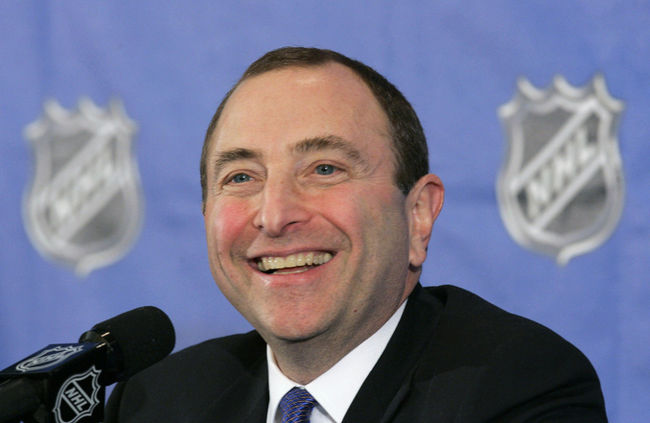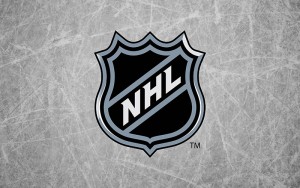It took weeks of waiting, but the NHL and NHLPA appear to be ready to enter into serious negotiations.
The NHL presented the players with a new proposal today that called for an even 50-50 split of revenue and includes a deferred salary plan to ensure that players receive all of the money they’ve been promised in existing contracts. In addition, the proposal calls for a full 82-game season that would start on Nov. 2 and would finish in the last week of June.
Of all of the proposals presented thus far by either side, this one from the NHL has taken the greatest stride toward meeting somewhere in the middle. The initial gut reaction is that a step has been taken forward and the foundation and framework have been laid for a deal to be worked out. This is especially true because the plan originated from the owners, who have historically displayed a stubborn attitude when it comes to compromise.
However, fans should approach the prospect of a new deal being reached within the next 10 days or so with a certain amount of cautious optimism. While this is a very aggressive move for the owners toward the middle, the  agreement fails to address one of the key components that players have been lobbying for since day one of negotiations.
agreement fails to address one of the key components that players have been lobbying for since day one of negotiations.
League-wide revenue sharing.
Sure, the players and owners participate in a revenue sharing program, but the players indicated in their early proposals that the only way to truly fix the league long term – which means putting the small market teams in a position to succeed – is to implement a league-wide revenue sharing program between clubs. The owners’ proposal does not address this issue (that we know of).
But the players may choose to ignore that component if it means getting a fair deal struck with a key component – an even division of player-owner revenue sharing. Initially, proposals from the owners called for as much as a 10 percent reduction in revenue sharing for the players, bumping them down from 57 percent to 47 percent. The fact that the owners reneged on that initial offer speaks volumes to their desire to get a deal done quickly. A fair deal at that.
Plus, the inclusion of a full 82-game season makes the fans happy. Those of us that have felt slighted by our loss of the first month of hockey will embrace the season going further into the summer. Plus, a full schedule would still include the Winter Classic and the All-Star Game. The Winter Classic especially has to be a vital component for the NHL and a driving force for them to agree to a deal soon. After all, this event will be the biggest in NHL history with well over 100,000 fans in attendance.
Sources say that the proposal also includes a maximum contract length of five years and includes language stating that players can only reach unrestricted free agency when they reach the age of 28 or have provided eight years of NHL service. The deal would keep entry-level contracts at three years. Earlier proposals tabled by the NHL included longer entry-level contracts to allow clubs to retain their homegrown talent for longer period of time.
It will be interesting to see how players react to the contract limits specifically. Teams were quick to expose a loop-hole in the last CBA that allowed for lengthy front-loaded contracts to help keep cap hits low. Under the last CBA, cap hits were based on the “average” amount a player would make during the length of his contract. While a player may make upwards of $10 or $11 million in any one given season, their cap hit was kept low by extending the length of the contract with years where the player made one or two million per season. In theory, a contract limit would help eliminate any such abuse of the system and keep costs in check.
It’s unclear how the NHL’s proposal will affect the salary cap. In addition to a rollback of player salaries, earlier proposals by the NHL also called for a lower salary cap.
“Both sides were waiting for somebody to make the next move,” said Vancouver Canucks goaltender Cory Schneider. “For them to make a move towards us, it at least signals that they are serious about negotiating and getting started. Up until this point, we weren’t fully convinced of that. This is obviously a good step towards that.”
Players participated in a conference call this evening to discuss the finer points of the contract and determine how to proceed. While it’s likely this new offer from the league won’t be agreed to hands down by the players, it certainly offers some aggressive framework – and a keen timetable – for both parties to work with.
“I would like to believe that it will be an excellent starting point and we can go forward and see if there is a deal to be made,” said NHLPA executive director Donald Fehr.



Got a question people might know the answer to. So in the propsed deal there is the elimination of re-entry waivers. Does that mean that teams are free to sign players outside of the league with out other teams optioning to sign them away.
So when the Wings signed Nabokov a few years ago to a cheap deal when they were dealing with goaltender issues just to have the Islanders snach him away for the already agreed upon terms. That would not happen any more?